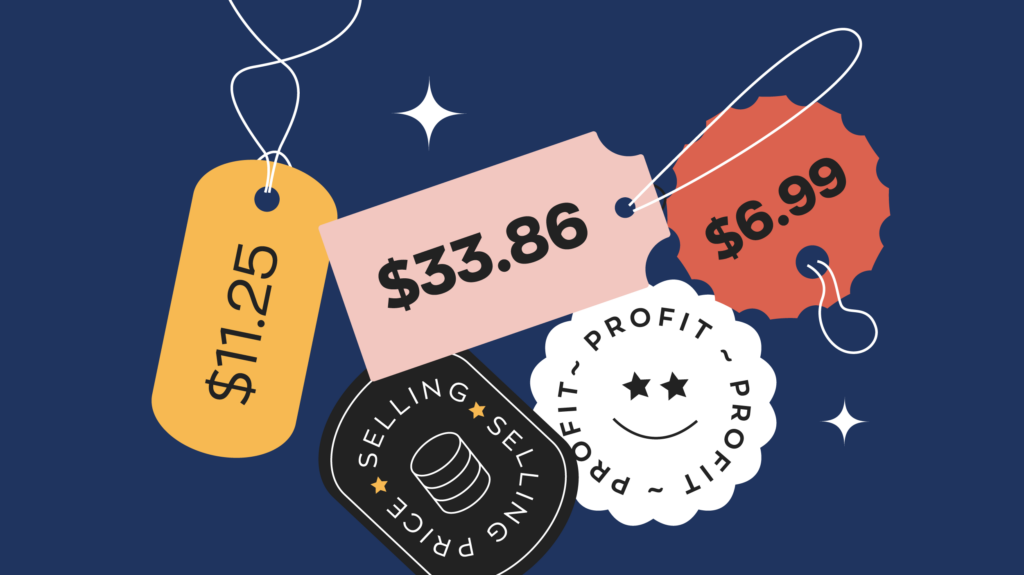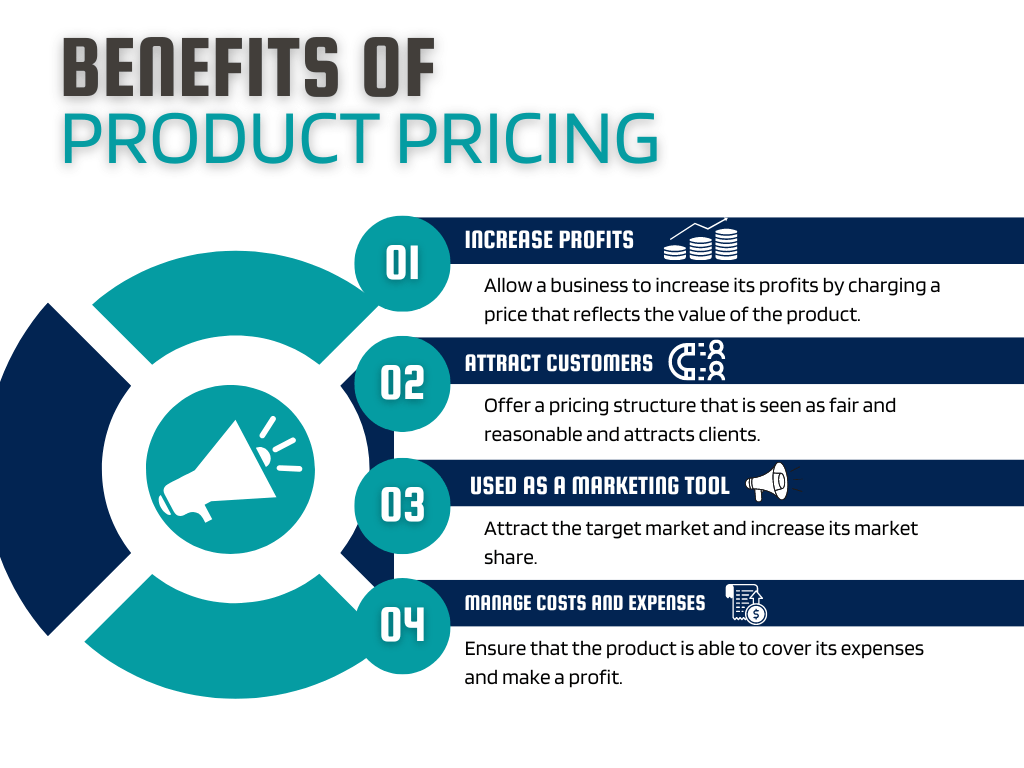Post map
ToggleDetermining the selling price for a product is not just a simple matter of adding the cost price plus a desired profit margin. It is a complex process that requires careful consideration and must be based on various factors. Not applying a specific and accurate formula can lead to regrettable mistakes in pricing products. One of the biggest challenges in determining the selling price is making your product competitive in the market while still ensuring enough profit to cover costs. This requires you to carefully consider production costs, marketing, and brand management costs, as well as the level of profit you want to achieve. An effective pricing strategy is not just about setting a number, but a complex process that requires you to find a reasonable balance between market competitiveness and the profit goals of your business. To do this, you can refer to the steps that Optimal FB has shared below to determine how is the price of a product determined?
What is the price of a product?
The selling price is not just a simple number, it is also a key factor in generating profits for a business and meeting customer expectations. It is not just an amount that customers have to pay but also reflects the product’s value and the brand’s positioning in the market.
In each period, businesses have to adjust the price of products according to market fluctuations and customer preferences. Factors such as competition, production costs, and market demand will affect pricing decisions. This requires flexibility and strategy in determining product prices to ensure a balance between business interests and customer satisfaction.

The price of a product plays an important role
In the business field, determining the selling price plays a crucial role and profoundly impacts a company’s business operations. Here are important points about the importance of determining the selling price:
- Profit and capital management: One of the most important benefits of determining the selling price is to help businesses easily calculate profits and manage capital accurately. The selling price is not only a direct factor in determining the profitability of a business but also affects the compensation of other costs such as production costs, advertising, and operating costs.
- Competitiveness: The selling price plays an important role in competing with competitors in the market. Customers tend to compare the prices of the same product between stores or businesses. Therefore, setting a reasonable and competitive selling price will directly affect the purchasing power of customers for each unit of product.
- Brand positioning and reputation: Determining a reasonable selling price also helps businesses position their brand in the market. An appropriate price will help the business make a positive impression on customers, enhance credibility, and have a strong foothold in the business market. At the same time, this price also contributes to building a professional and reliable brand image in the hearts of customers.
Factors that affect the price of a product
Factors affecting the selling price of a product include internal and external factors, specifically as follows:
External factors
- Nature of the market: Each market will have its own nature and special requirements for product pricing. For example, in a monopolistically competitive market, the selling price may be determined based on the rarity of the product, whereas, in a perfectly competitive market, the selling price will have to compete strongly to attract customers.
- Quantity of demand: Measuring the elasticity of demand in response to price fluctuations is important. Each price level will create a different amount of demand. Businesses need to clearly understand this to be able to adjust selling prices appropriately and attract the largest number of customers possible.
- Competition: In a competitive environment, information about competitors is important. Comparing your products with competitors helps businesses identify their strengths and weaknesses, thereby optimizing their business strategy and increasing competitive advantage.
- Other factors: In addition to the above factors, there are also general economic factors such as inflation, deposit interest rates, and unemployment that also affect product pricing. This requires businesses to have an overall view of the market and economics to make a reasonable pricing decision.
Internal factors
- Marketing Objectives: The decision on selling price needs to be closely linked to the proposed marketing strategies. For example, if you want to convey the message that your products are the most competitively priced on the market, your pricing should reflect this. However, if customers can easily find alternative products that are cheaper and of equal quality, then any marketing efforts may not be as effective as expected.
- Cost of goods sold: The production cost of the product is also an important factor in determining the selling price. If production costs are higher than those of competitors, and the business still wants to maintain the same profit level, the selling price will have to be higher. However, this can create a big disadvantage, and optimizing the production process and cutting some profits to increase competitive advantage is necessary.
- Sales strategies: The way a business approaches the market will also affect how the product is priced. There are many different sales strategies such as profit maximization, long-term survival goals, market penetration, or market domination. Each strategy requires a different pricing approach to ensure it reflects the business goals of the business.
How is the price of a product determined?
To price retail products, you need to take the following steps:

Step 1: Determine the original price of the product
Original price (cost price) = Product cost (including costs of manufacturing or importing products) + Other costs (such as labor costs, packaging, transportation, marketing, and other costs related to).
Step 2: Identify customer segments and understand the market
Before determining the selling price for a retail product, the most important to understand the market segments you want to target. This way, you can shape your target customer model. Only when you have insight into specific potential customers can you customize your pricing to be appropriate and competitive in the market? This depends on your understanding of the shopping behavior and consumption preferences of your target customers. Aggregating all this data will help you determine the most suitable price while meeting customer needs and expectations, thereby creating satisfaction and increasing your chances of success in the market.
Step 3: Determine the profit earned
Usually, manufacturing companies or big brands often set profit margin targets in the range of 30-50%. On the contrary, small brands or retailers often aim for higher profits, from 55-100%.
Step 4: Set the retail price for the product
Retail price = [(Cost price) / (100 – % desired profit)] x 100
Step 5: Set the wholesale price for the product
Divide the quantity and set many different discount levels, the more you get, the cheaper the price. This helps to provide consistent numbers, ensuring fairness for all parties involved.
In the above article, Optimal Fb has shared detailed information most accurately. Hopefully, the content can help you understand the concept and influencing factors of product price and successfully determine the selling price of a product.
Contact Info
Information about “How is the price of a product determined?” hopes to provide you with additional necessary knowledge. At optimal FB, there is a team of highly qualified and experienced staff and experts who will provide facebook business account as well as support when you run Facebook ads. Contact us via phone number: +84 564 104 104.
Frequently asked questions
When setting the selling price for a product, there are several things to consider to ensure business success. First, you need to understand your market and customers to set an appropriate and competitive price. Second, consider production costs, transportation, advertising, and other expenses to ensure that the selling price will cover all costs and ensure profit. Finally, always monitor and evaluate the selling price of the product to adjust as necessary based on market changes and customer needs.
To calculate the selling price of a product on Shopee, you need to consider important factors such as production or import costs, shipping costs, Shopee service fees, and desired profit margin. Then, you can use the formula to calculate the selling price by adding the total costs with the desired profit margin and Shopee service fees. This helps you set a reasonable price to compete in the Shopee market.


